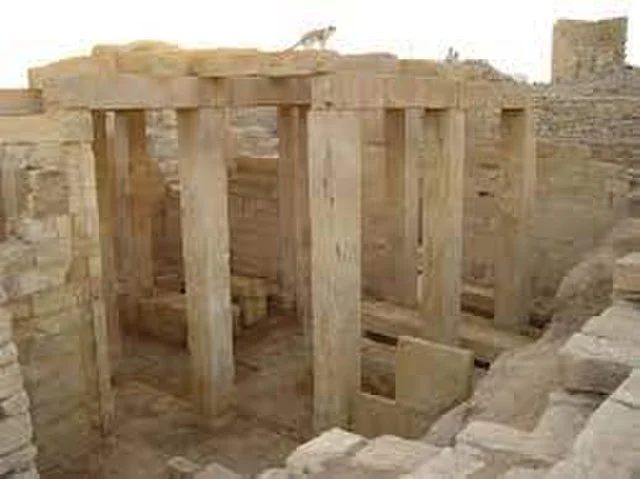The Temple of Nakrah, located in Yemen’s Hadhramaut Valley, is an important archaeological site with deep historical and cultural significance. This ancient temple reflects the pre-Islamic religious practices of the Hadhramaut region. Scholars date its construction to between the 1st century BC and the 1st century AD. Dedicated to the moon god Sin, this temple stands as a key structure from the ancient Hadhramaut kingdom, a powerful South Arabian civilization.
Get your dose of History via Email
Architectural Features and Layout
The Temple of Nakrah exhibits traditional South Arabian architecture, featuring stone masonry techniques common in the region. Constructed primarily of limestone, the temple incorporates large, precisely cut blocks, showcasing advanced engineering methods. The structure includes a rectangular sanctuary with an open courtyard, allowing worshipers to gather outside the central space. Archaeologists have identified a ceremonial altar within the courtyard, suggesting it served ritualistic functions.
The entrance leads to a columned hall, which directs visitors toward the central sanctuary. This layout aligns with other South Arabian temples, emphasizing symmetry and structural simplicity. The presence of inscriptions and relief carvings on the temple’s walls provides insights into the religious symbolism and artistic traditions of the time.
Religious Significance
The Temple of Nakrah is dedicated to Sin, the South Arabian moon god, a deity highly revered in the ancient Hadhramaut civilization. Moon worship was central in South Arabian religions, and Sin was among the most significant deities. Temples dedicated to Sin are found across ancient South Arabia, indicating the widespread devotion to this deity.
Inscriptions and carvings in the Temple of Nakrah suggest ritual practices were integral to daily life for Hadhramaut’s inhabitants. These religious practices likely included offerings and rituals intended to invoke the god’s protection and favor. The Temple of Nakrah’s dedication to Sin highlights the role of organized religious spaces in structuring community life and belief systems during this era.
Archaeological Discoveries
Excavations at the Temple of Nakrah have uncovered numerous artifacts, including pottery, stone tools, and inscriptions. These findings provide essential information about the cultural practices, trade relationships, and technological capabilities of the Hadhramaut civilization. Notably, archaeologists have found inscriptions in the South Arabian script, which document dedications to Sin and other deities.
These inscriptions offer glimpses into the temple’s religious use and the status of those who worshiped there. Furthermore, the discovery of votive objects and ceremonial items suggests the temple held a prominent role in both religious and communal activities.
The Temple’s Role in South Arabian Civilization
The Temple of Nakrah holds significant importance as one of the primary religious sites in the Hadhramaut kingdom. The Hadhramaut civilization was known for its wealth, derived from its control of trade routes and resources like frankincense and myrrh. Religious institutions, including temples, played essential roles in legitimizing and maintaining the ruling authority.
Through religious ceremonies and communal gatherings, the Temple of Nakrah likely contributed to social cohesion and reinforced the kingdom’s cultural identity. By examining the temple’s remains, scholars gain a clearer picture of the Hadhramaut’s social structure and the influence of organized religion in maintaining political stability.
Conclusion
The Temple of Nakrah is an invaluable archaeological site that provides deep insights into the religious, cultural, and social practices of the ancient Hadhramaut kingdom. Dedicated to Sin, this temple reflects the importance of moon worship in South Arabian society. Its well-preserved architecture and the discoveries made during excavations highlight the temple’s role as both a religious and cultural center.
As research continues, the Temple of Nakrah remains crucial to understanding the broader landscape of ancient South Arabian civilizations. Its enduring presence offers a glimpse into the sophisticated societal structures of the Hadhramaut people, their religious devotion, and their architectural innovation.
Source:

